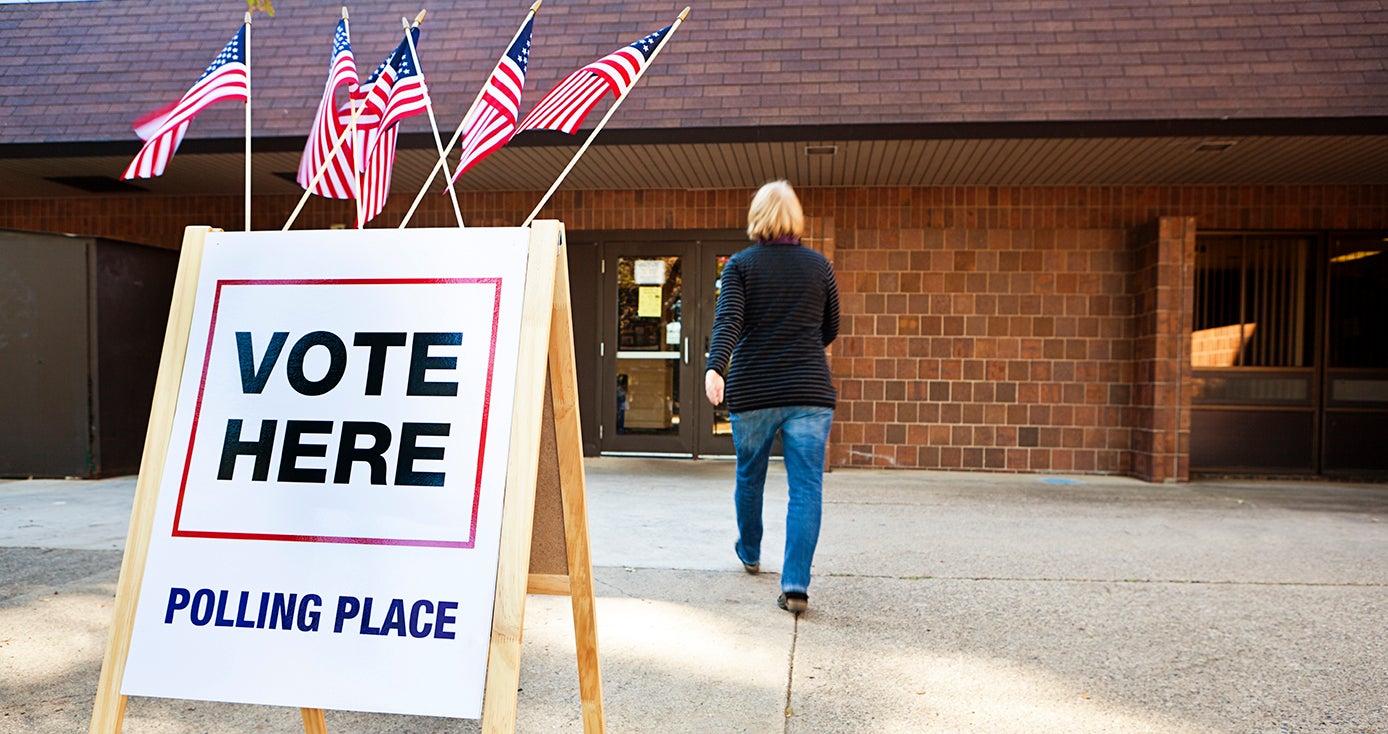
Subscribe to Pittwire Today
Get the most interesting and important stories from the University of Pittsburgh.New Pitt Cyber Analysis Created to Guide Statewide Voting Security Efforts
Research and public education efforts conducted by the University of Pittsburgh Institute for Cyber Law, Policy, and Security (Pitt Cyber) have provided a roadmap for policymakers to follow as they work to update the state’s elections architecture before the 2020 election.
Pitt Cyber’s latest effort — maps and analysis of voting machine purchases — conducted with nonpartisan Pennsylvania group Citizens for Better Elections, aims to steer counties that still need to purchase new systems toward the safest and most secure option.
In January, the Pitt Cyber-hosted Blue Ribbon Commission on Pennsylvania’s Election Security issued a report calling for these new systems. The report said purchasing systems with voter-marked paper ballots “should be the most pressing priority for Pennsylvania officials” seeking to secure elections.
The numbers behind the purchases are proving those types of systems are also the most cost effective choice.
“Pennsylvania’s counties are selecting new paper-based voting systems with long-term implications for the Commonwealth’s elections. Our analysis shows that most counties are selecting hand-marked paper ballot systems, which come at roughly half the cost of electronic ballot-marking device systems and carry far fewer security and voter verification challenges,” said Pitt Cyber Policy Director Christopher Deluzio.
Pennsylvania’s counties are selecting new paper-based voting systems with long-term implications for the Commonwealth’s elections.
Christopher Deluzio, policy director of the Pitt Institute for Cyber Law, Policy, and Security
The analysis shows which of Pennsylvania’s 67 counties have selected new voting systems, the systems’ costs per voter in each county, the vendors supplying the systems and which configuration each county selected: either exclusively ballot-marking devices (BMDs) or hand-marked paper ballots (HMPBs) read by optical scanners with ballot-marking devices available for accessibility. The findings are accompanied by graphics and interactive maps that will be updated as more counties make their selections.
BMDs are voting machines that use a touch-screen interface to record votes and then generate a printed record of voter selections. For HMPBs, voters mark their selections on paper ballots which are then tabulated by optical scanners. HMPB systems include at least one BMD in each polling place for accessibility.
The report by the commission, a bipartisan effort co-chaired by Pitt Cyber Founding Director David Hickton and Grove City College President Paul McNulty, recommended Pennsylvania replace its paperless electronic voting machines with those that feature hand-marked paper ballots. The report also noted that Pennsylvania was among several states that had its voter registration database targeted by Russian operatives, according to federal officials.
Due to these threats and a host of others, Governor Tom Wolf last year ordered Pennsylvania counties to replace voting systems. The new systems must be paper-based and, for electronic machines like BMDs, must include paper records of individually cast votes. Consequently, counties can select between either HMPB systems or exclusively BMD systems.
The purchase analysis, led by Deluzio and Citizens for Better Elections Cofounder Kevin Skoglund, showed that HMPB systems are the most fiscally sound choice and present far fewer security and voter verification issues than BMDs.
“There is remarkable consensus among experts, including the Blue Ribbon Commission on Pennsylvania’s Election Security, that paper ballots are the most secure option for voters,” Deluzio said. “Our new analysis confirms that hand-marked paper ballots are a relative bargain compared to electronic ballot-marking devices.”
As of Aug. 26, 37 of the state’s 67 counties had purchased new machines. The analysis also showed counties that selected HMPB systems paid around $12.37 per voter. That is nearly half the amount paid by counties that selected exclusively BMD systems, at $24.60 per voter.
So far, counties have been leaning in favor of HMPBs. Twenty-seven of the 37 counties that have made purchases chose HMPB systems. Counties are also overwhelmingly choosing machines from ES&S, the nation’s largest voting systems vendor. Twenty-four of the 37 counties selected ES&S systems.
Several factors contributed to the decisions, according to the analysis, but the choice ultimately came down to dollars and cents.
“Cost is a large motivating factor — counties have limited funds and want to spend citizen tax dollars responsibly,” Skoglund said. “Features, ease of use and prior relationship with vendors were also frequently cited reasons for choosing a system. In some counties, expert opinion and public feedback made a big difference. But by far and away, cost has been the biggest part of these decisions.”
On Aug. 20, the commission’s work was recognized by Allegheny County Council with a proclamation applauding its impact across the state.
“As the county’s election infrastructure ages, it becomes more at risk for election fraud and malfunctions. The commission is taking steps to ensure that risk decreases,” reads the proclamation.
One of the biggest factors in decreasing risk will be to continue to get the word out about the new voting systems and exactly what voters are getting out of those purchases, said Skoglund.
“For voters who care about their elections and care about how their tax dollars are spent, this analysis can help them advocate for choices that are good for the integrity of elections and fiscally responsible,” he said.



